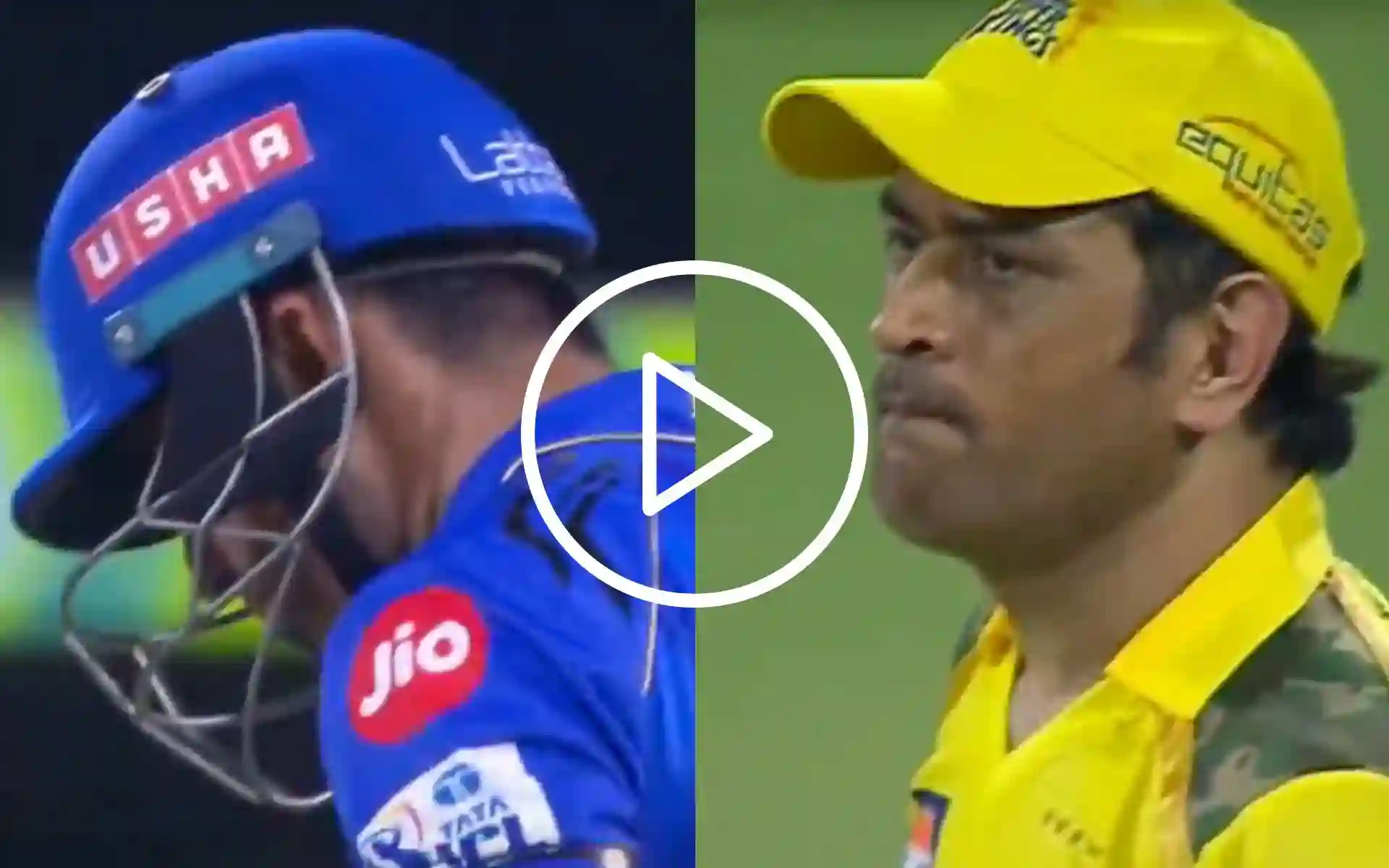Chahar's Angry Reaction: Is Dhoni Under Pressure?
Editor’s Note: Chahar's outburst following a recent match has sparked intense debate – is this a sign of deeper issues within the team, and is Dhoni feeling the heat?
Why This Matters
The recent angry reaction from Deepak Chahar, a key player in [Team Name - e.g., Chennai Super Kings], following a match loss, has sent ripples through the cricketing world. This isn't just about a player's on-field frustration; it raises questions about team morale, leadership, and the pressure cooker environment within professional sports. Specifically, many are wondering if the legendary MS Dhoni, the team's captain/mentor, is feeling the pressure of maintaining success amidst challenges. Understanding the dynamics at play is crucial for fans, analysts, and the team itself. This article will delve into Chahar's outburst, its potential implications, and explore the possible pressures faced by Dhoni. We'll analyze the situation, exploring key aspects impacting team performance and leadership.
Key Takeaways
| Point | Insight |
|---|---|
| Chahar's Outburst | Suggests underlying tensions within the team. |
| Dhoni's Leadership Style | Facing scrutiny amidst recent underperformance. |
| Team Dynamics | Potential communication breakdowns and morale issues are in question. |
| Impact on Future Matches | Chahar's reaction could affect team unity and performance in upcoming games. |
| External Pressures | Expectations and media scrutiny contribute to the pressure on both players and team. |
Chahar's Angry Reaction
The incident involving Deepak Chahar's angry reaction occurred during [Specific Match Details – Date, Opponent, Brief Summary of the incident]. This outburst, witnessed by millions, highlights a potential fracture within the team dynamic. While on-field frustration is common, the intensity and public nature of Chahar's reaction suggest a deeper issue. This incident is not just a single event, but a potential indicator of simmering tensions, perhaps stemming from recent losses or internal disagreements. The reaction needs to be understood within the broader context of the team's current performance and the pressures faced by all players.
The Pressure on Dhoni
MS Dhoni's legendary status in cricket brings immense pressure. The expectation to deliver consistent victories is enormous, especially with the [Team Name]'s recent struggles. His leadership style, known for its calm demeanor, might be facing its toughest test yet. The question is whether the pressure of maintaining success, coupled with the potential team conflicts, is taking its toll. Is he finding it harder to manage expectations and maintain team cohesion? Analyzing his decision-making in recent matches could provide valuable insights.
Dhoni's Leadership Style Under Scrutiny
Dhoni's leadership is often described as [describe Dhoni's leadership style - e.g., calm, calculated, empowering]. However, recent events suggest a need to examine his methods in the current context. Is his usual approach still effective in navigating the current challenges? The team's performance and the players’ reactions suggest a need for open communication and a possible readjustment of strategies. Perhaps a more transparent leadership approach is needed to address underlying issues effectively.
People Also Ask (NLP-Friendly Answers)
Q1: What is the significance of Chahar's angry reaction?
A: Chahar's reaction points to potential underlying tensions within the [Team Name], raising concerns about team morale and leadership effectiveness.
Q2: Why is Dhoni under pressure?
A: Dhoni faces immense pressure due to high expectations for consistent victories and maintaining the team's high standards amidst recent challenges.
Q3: How might this affect the team's future performance?
A: Internal conflicts and unmet expectations can significantly impact future matches, affecting both individual and team performance.
Q4: What are the potential solutions to this issue?
A: Open communication, addressing underlying issues, and potentially adjusting leadership strategies could be beneficial.
Q5: What is the role of media scrutiny in this situation?
A: Media attention amplifies the pressure on players and the team, potentially exacerbating existing tensions and conflicts.
Practical Tips for Understanding Team Dynamics in Cricket
- Analyze Match Performances: Look beyond wins and losses to understand individual and team performances.
- Observe Body Language: Pay attention to player interactions and body language during and after matches.
- Follow Team News: Stay informed about any press conferences, interviews, or team announcements.
- Consider External Factors: Account for the pressure of media, fan expectations, and tournament pressures.
- Analyze Leadership Styles: Compare different leadership approaches and their impact on team performance.
- Seek Expert Opinions: Follow analyses from credible sports analysts and commentators.
- Understand Player Personalities: Recognize the varying personalities within the team and their impact.
- Focus on Team Unity: Look for indicators of strong team unity versus signs of internal division.
Summary: Chahar's angry outburst underscores potential internal issues within the [Team Name]. While on-field emotions are natural, this incident highlights the significant pressures faced by players and the leadership. Dhoni's leadership style is being scrutinized, prompting reflections on communication, team cohesion, and the impact of external pressures.
Closing Message: The situation with Chahar and the potential pressure on Dhoni calls for careful analysis and understanding. What strategies can teams employ to better manage internal conflicts and the intense pressures of professional sports?
Call to Action: Share your thoughts on this developing story in the comments below! What do you think is the best way for Dhoni to address the challenges facing the team?

